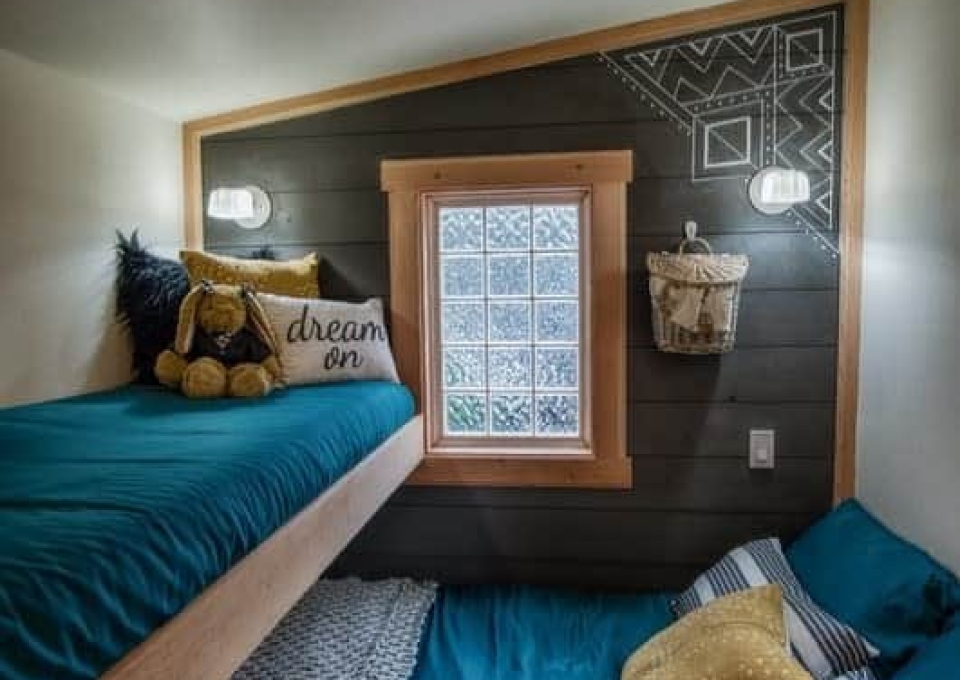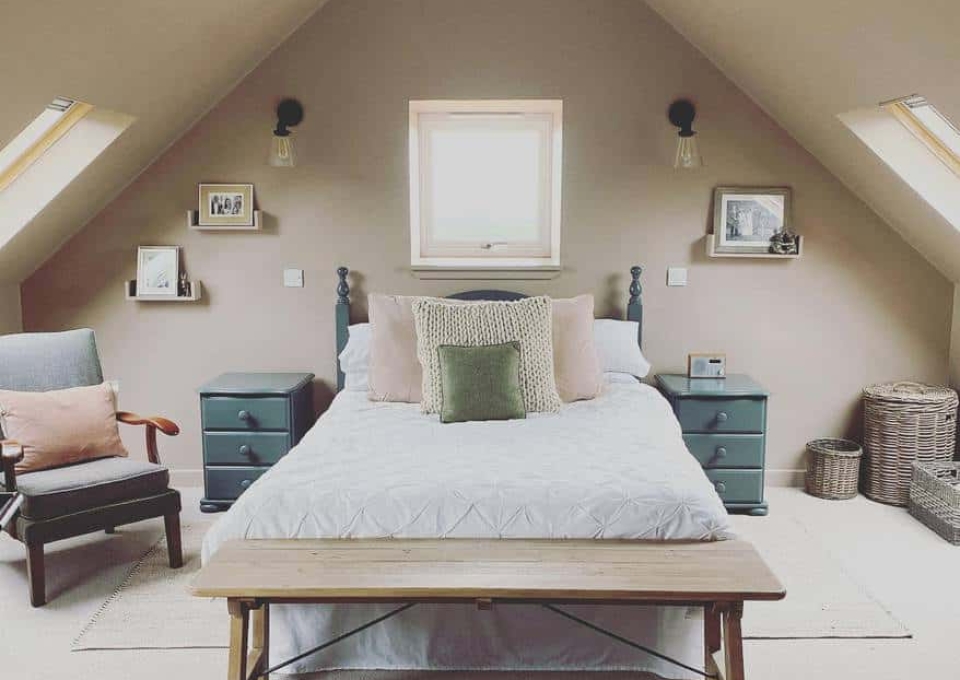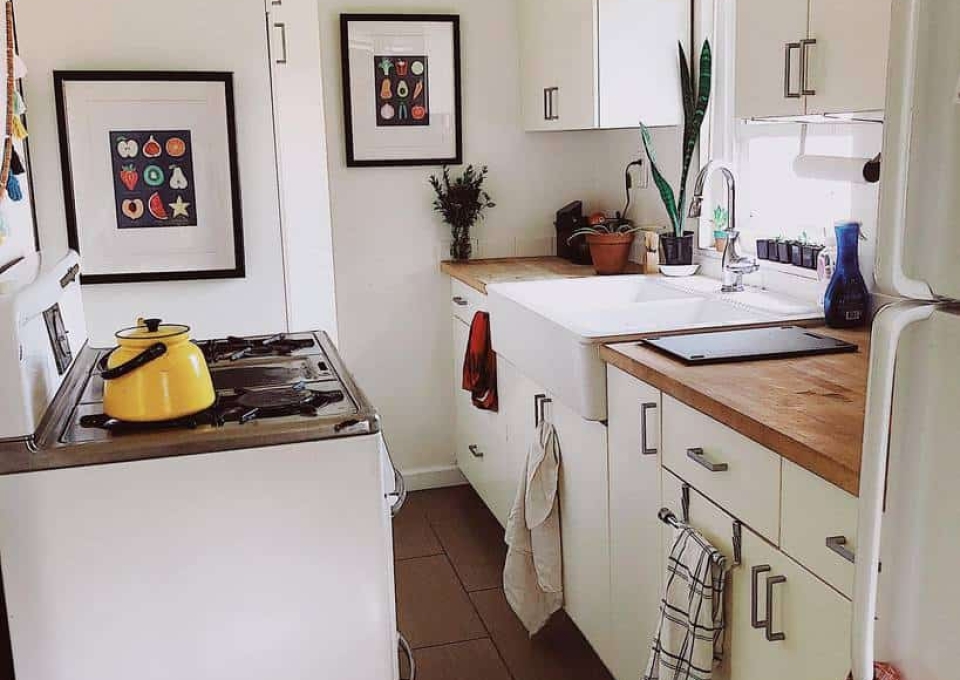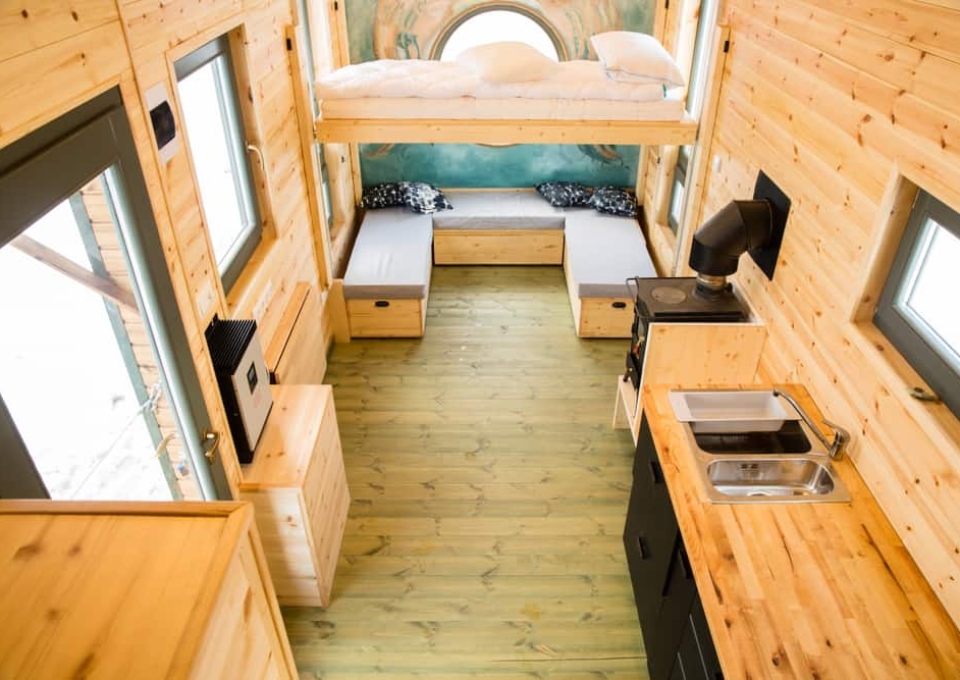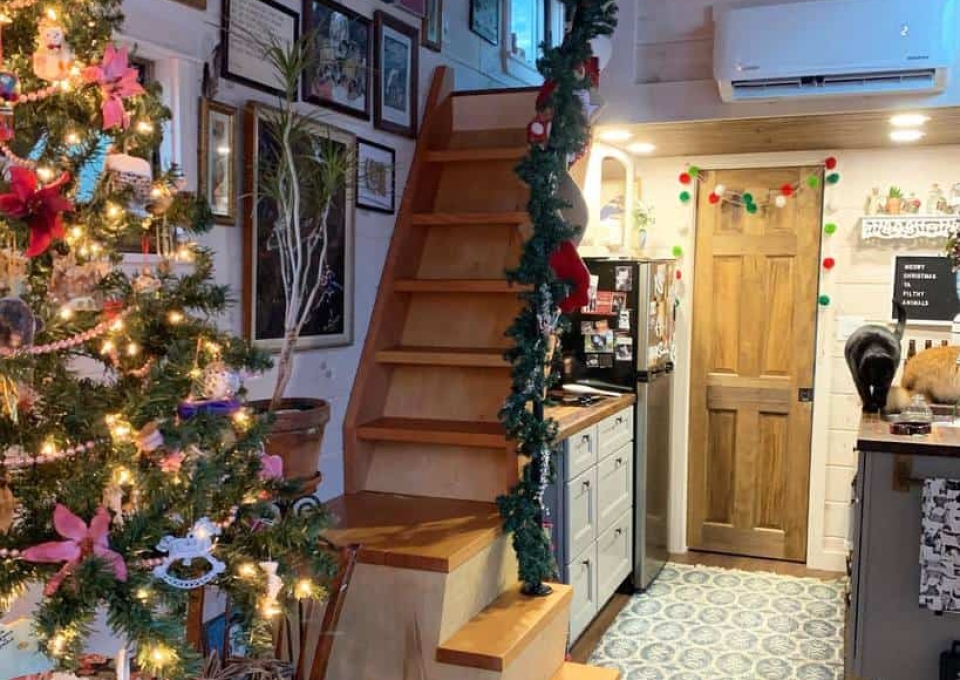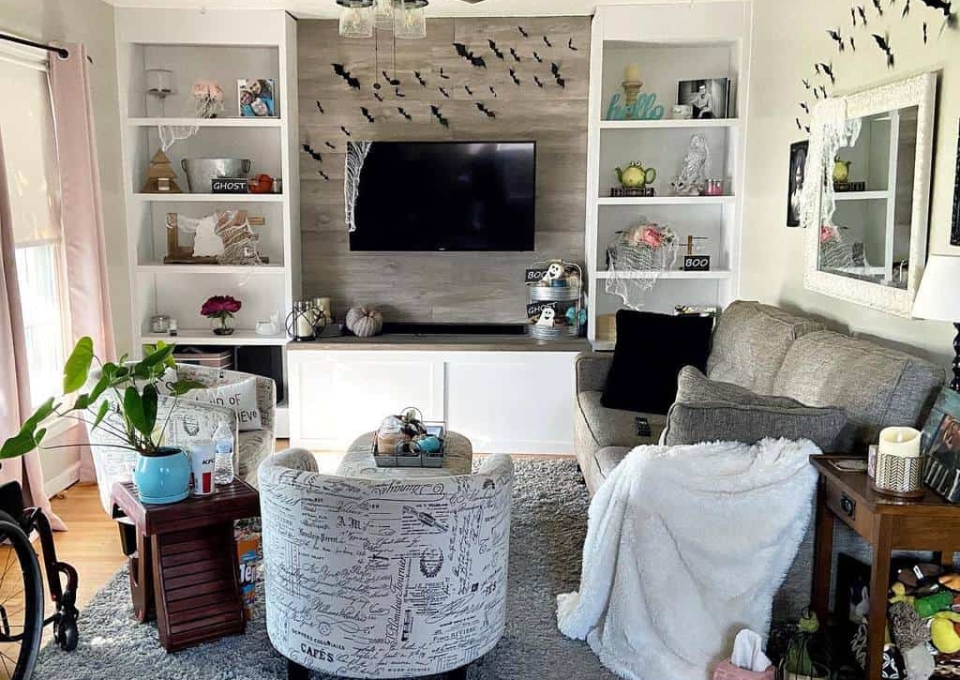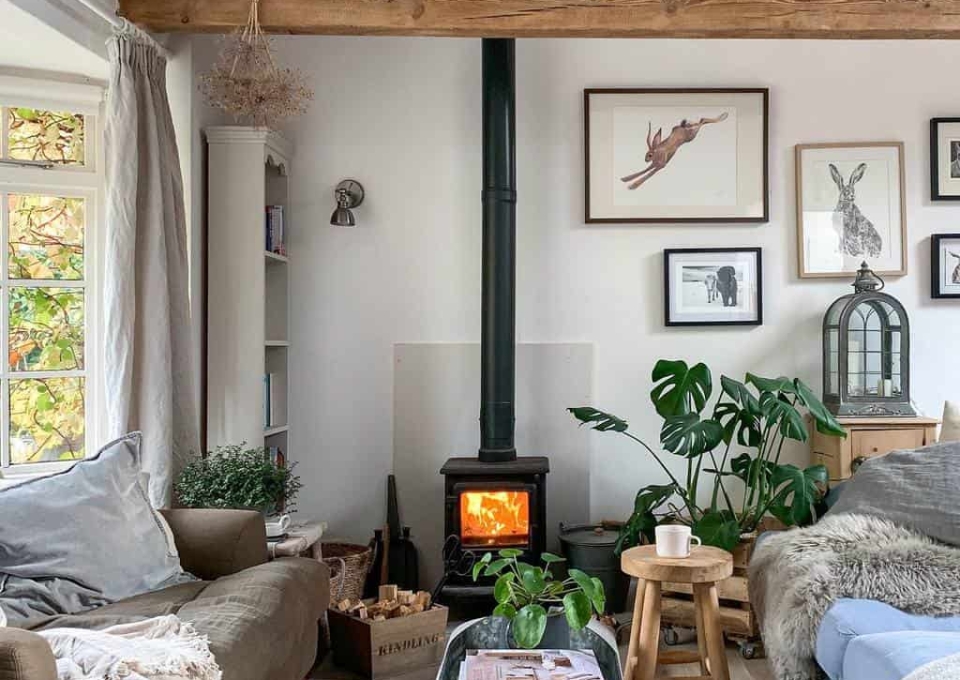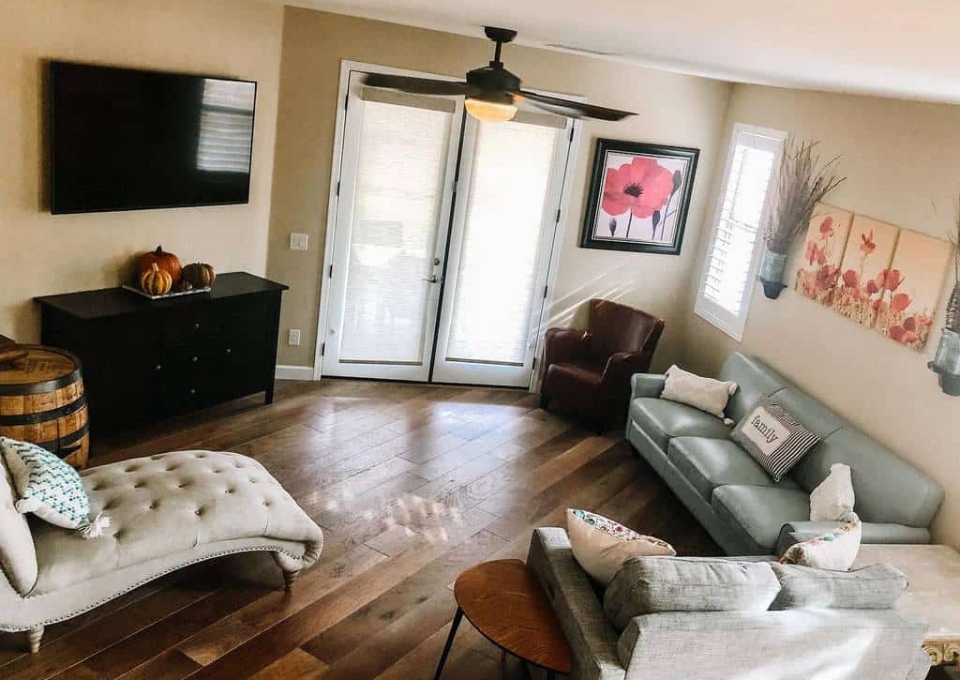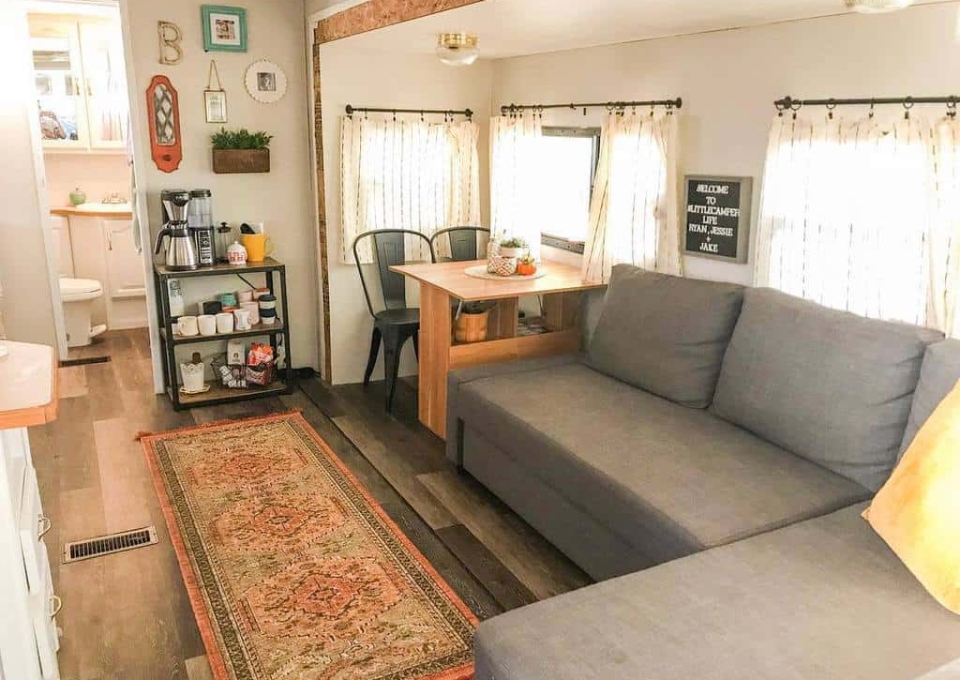Introduction to Tiny Living
Contents

What is Tiny Living?
Tiny living focuses on simplifying life by downsizing one’s living space. This movement promotes efficiency and sustainability, encouraging a transition from large homes to smaller, more manageable living environments.
The Rise of Tiny Homes and Small Space Solutions
As urban populations grow and environmental concerns increase, tiny homes have become more popular. These small dwellings are not only cost-effective but also cleverly designed to make the most of limited space.
Benefits of Embracing a Smaller Living Space
Financial freedom often comes with choosing to live in a smaller space, as lower utility and maintenance costs provide a more flexible lifestyle. Additionally, the environmental impact is reduced, benefiting both the individual and the planet. Living in a smaller space encourages creativity, requiring thoughtful decisions about possessions and space usage.
Planning and Designing Your Tiny Home

Understanding Your Needs and Space Requirements
Starting your tiny home journey requires a clear grasp of your lifestyle needs and the space necessary for comfortable living. Evaluate your daily activities and identify the essentials you can’t do without. This helps in designing a space that is both cozy and functional, avoiding a cramped feel.
Zoning and Legal Considerations for Tiny Homes
- Before starting construction, understand local zoning laws and building codes. These rules can greatly affect where and how you build your tiny home.
- Consulting with a local planner or legal expert can offer crucial guidance and help you navigate the complex legal requirements.
Design Principles for Small Spaces
Effective design in tiny homes focuses on maximizing space while maintaining aesthetics. Use multi-functional furniture and built-in storage to free up floor space. Choose lighter colors to make the interior appear larger, and install large windows to bring in natural light and visually extend the space to the outdoors. Every design choice should enhance both functionality and livability.
Key Factors to Consider Before Optimizing Space

Assessing Your Current Space and Needs
Start by evaluating your current living area. Identify how each part of your space is utilized and locate any inefficiencies. This evaluation will help you make specific changes to improve the functionality and comfort of your tiny home.
The Importance of Multi-Functional Spaces
Adopt the idea of multi-functional spaces. Furniture that converts and storage solutions that also serve as decor are not just useful; they are necessary. This method ensures a smooth integration of practicality and style, especially in small areas.
Budgeting for Tiny Home Modifications
- Establish a practical budget. Account for the costs of materials, furniture, and professional services if needed.
- Prioritize quality in essential areas, such as multi-functional fixtures and durable finishes.
- Plan effectively to minimize unnecessary expenses and ensure a smooth transition to tiny living.
Maximize Your Bedroom Space with Smart Solutions
Transform your small bedroom into a functional and serene space. Elevate your sleep with a loft-style bed, a practical solution that frees up the room, allowing light and air to circulate. Below, you can create a compact office or a cozy reading nook.
Use slide-out drawers or rolling bins under your bed to store seasonal clothes and extra bedding. This keeps your space organized and essentials within reach. Opt for multifunctional furniture, like an ottoman that doubles as storage or a wall-mounted nightstand to save floor space.
Coordinate your furniture with the room’s color scheme to create an illusion of more space. The right color choices can make walls appear to recede, giving the room a more open feel.
- Loft Beds Elevate your rest and reclaim your floor.
- Under-Bed Storage Conceal clutter with ease and efficiency.
- Multipurpose Furniture Merge function with form for a seamless look.
- Color Harmony Select hues that enhance spaciousness and serenity.
Creative Loft Ideas for Tiny Living
Maximize your tiny space by looking up. A low-ceiling loft can become a cozy sleeping nook, providing warmth and comfort. Skylights in attic rooms not only offer a view of the stars but also fill your space with natural light, making even the smallest area feel more open.
Storage is essential. Consider a bed with built-in drawers or shelves underneath to store your essentials, keeping your living area tidy and peaceful. A skylight serves as a portal to the sky, offering a nightly view of the cosmos and reducing the need for artificial light during the day.
Lofts are the ultimate in efficiency and style for tiny living. They save space and create a unique living experience.
Innovative Kitchen Designs for Small Spaces
Transform small living areas with smart kitchen designs for compact spaces. Efficient storage solutions, like pull-out pantries and ceiling-mounted cabinets, maximize vertical space. Magnetic strips keep knives accessible, and fold-down counters offer workspace without taking up room. Slim refrigerators and two-burner stovetops fit perfectly, ensuring no space is wasted.
These kitchens blend form and function seamlessly. Retractable tables serve as both dining spots and prep areas. Customizable drawer dividers keep everything organized, which is crucial in a small kitchen.
- Smart Storage: Vertical solutions and hidden compartments.
- Dual-Purpose Features: Tables and counters that adapt to your needs.
- Compact Appliances: Space-saving without compromising performance.
Maximizing Style in Minuscule Spaces
Transforming a small space into a stylish haven requires creativity and strategy. Start with a minimalist base; use whites and light grays to create a sense of openness. Add personality with vibrant accessories—a pop of color here, a textured throw there.
Smart furniture choices are crucial. Opt for a sofa bed that doubles as a guest bed or a dining table that can be tucked away. Utilize vertical space with wall-mounted desks and shelves to keep the floor area clear. Mirrors can be your secret weapon, reflecting light to create an illusion of more space.
Every item in your home should reflect your style while serving a purpose. Whether it’s a storage ottoman or nesting tables, ensure each piece is both functional and elegant.
- Minimalist Foundations Use neutral tones to create a sense of space.
- Colorful Accents Add small, bold details to bring character.
- Dual-Purpose Furniture Select pieces that adapt to your needs, saving space and adding value.
- Vertical Solutions Use walls for storage and workspaces to keep the floor uncluttered.
- Reflective Surfaces Use mirrors to amplify light and visual depth.
Maximizing Space with Functional Furniture
Unlock the potential of compact living with smart, dual-purpose furnishings. A sleek murphy bed serves as a polished cabinet by day and a cozy retreat by night. It’s a transformative piece for any room that also functions as a workspace.
Imagine a dining table that extends to meet your needs—from solitary breakfasts to festive dinners. It’s a versatile centerpiece.
Consider the versatility of a storage ottoman. It provides seating when friends gather and storage for extra throws and novels when they leave. Modular sofas can be reconfigured to suit your space and social events. A wall-mounted desk offers a productive nook without taking up floor space.
Floating shelves create airy displays and smart storage solutions, freeing up your floors. These strategic choices maximize your square footage and bring order and style to your home.
Creating Coziness in Compact Spaces
Envision a sanctuary of warmth in your compact quarters. It begins with a palette of warm colors—earth tones and muted hues that embrace you like a cozy blanket. The right lighting is crucial; imagine a symphony of ambient, task, and accent lights that add depth and a welcoming glow.
Furniture must be both inviting and practical. Choose pieces that beckon you to relax and double as ingenious storage solutions. Plush textiles—thick rugs, woven throws, and soft pillows—introduce texture and an extra layer of comfort.
Every square inch is precious. Select furnishings that cleverly hide away clutter while exuding elegance. And for that touch of life, greenery is key. Potted plants and fresh flowers not only cleanse the air but also infuse your space with natural beauty.
Maximizing Comfort in Compact Guest Houses
Transforming a compact guest house into a cozy retreat requires strategic planning. Start with compact furniture that combines style and comfort. A foldable bed is ideal, easily converting daytime areas into comfortable sleeping spaces.
Smart storage solutions are essential. Built-in shelves and hidden compartments help maintain an organized and serene environment. Light colors and mirrors create an illusion of space, while appropriate lighting enhances the room’s ambiance.

- Space-Saving Beds: Choose from murphy beds or sofa beds to maximize daytime living space.
- Storage Smarts: Opt for built-ins and hidden compartments to reduce clutter.
- Color and Light: Employ light shades and reflective surfaces for an airy feel; enhance with ambient lighting.
Small House Design Inspirations: Modern Meets Rustic
Explore the elegance of small house designs that blend modern aesthetics with rustic charm. Each space is thoughtfully designed to maximize style, combining clean modern lines with cozy rustic elements.
Modern Small House Ideas
Imagine spaces that feel open and airy. Geometric shapes and fluid floor plans create a sense of spaciousness. Large windows connect the interior with the outdoors, while a palette of neutral tones and materials like polished concrete, glass, and steel add a sophisticated touch.
Rustic Tiny House Ideas
Bring the forest’s essence into your home. Use reclaimed wood, exposed beams, and stone details to create a natural feel. Vaulted ceilings add height and a sense of space, while ingenious built-ins maximize functionality.
Whether you prefer modern or nostalgic styles, your tiny house is a blank slate for your personal touch. Let these ideas help you create a home that’s both efficient and full of character.
Embrace Nature in Your Small Space
Imagine a sanctuary where life thrives in every corner, even in the smallest of homes. Indoor gardens are key to this transformation, purifying the air and energizing your surroundings. Opt for low-maintenance succulents or air-purifying snake plants for their durability and aesthetic appeal.
Space-saving vertical planters can climb your walls, creating a green tapestry that enhances your decor. These living walls are both functional and visually striking.
Combine your greenery with natural materials like bamboo, rattan, or reclaimed wood. These textures add warmth and create an organic ambiance that aligns with eco-friendly elegance. The goal is to blend foliage with natural elements to foster a sense of tranquility.
Let the colors and textures of nature guide your palette, turning your small space into a harmonious retreat.
Creative Color and Lighting Strategies for Small Spaces
Imagine entering a space where light and color maximize every inch. Soft, pale hues like light blues and greens can make walls seem to recede, creating an illusion of more space. A monochromatic palette adds depth by layering different shades of the same color, enhancing complexity without clutter.
Lighting plays a crucial role. Layered lighting sets the mood with ambient, task, and accent lights working together. Recessed fixtures and wall sconces keep the design clean. During the day, mirrors placed opposite windows reflect natural light, increasing brightness and reach. At night, dimmable LEDs provide adjustable ambiance, from bright to soft.
Every element in a small space should be purposeful. Thoughtful color and lighting choices can make a room feel larger and more inviting.

Clever Storage Solutions for Tiny Living
Transforming a compact space into a functional haven requires constant innovation. Built-in storage is essential—think of a bed with drawers, a staircase that doubles as a bookshelf, and benches with hidden compartments. These solutions save space and enhance the home’s seamless design.
Every corner in a tiny home has potential. Consider a floorboard that lifts to store shoes or a mirror that pivots to reveal a jewelry organizer—these hidden compartments maximize space. It’s about making every square inch work for you.
For organization, utilize vertical space. Install floating shelves above doorways, use magnetic strips for knives and tools, and hang baskets on the walls. Furniture that folds away offers flexibility, while pegboards provide adaptable storage.
Storage in small homes is about creating a practical and welcoming environment. With these smart strategies, your home will feel more spacious despite its size.

Ascending with Style: Staircases and Ladders for Small Homes
Maximizing space in small homes requires smart design choices. Staircases and ladders can be both functional and stylish, enhancing your living area.
Space-saving staircases like alternating tread or modular stairs are efficient and make a bold statement. A compact spiral staircase can serve as a sculptural element while occupying minimal space.
Retractable ladders or library-style sliding ladders offer flexibility and elegance. They can be tucked away when not in use, seamlessly integrating into your living space.
These vertical solutions are more than just pathways; they are key design elements. Choosing the right materials and finishes can complement your decor, turning practical features into standout pieces.

Maximizing Light and Space with Glass Doors and Windows
Transform your small living space into an expansive retreat with the strategic placement of glass doors and windows. These elements are not mere details; they are the architects of light, drawing the sun’s embrace into your home, warming every corner, and creating a visual expanse that defies the confines of walls.
Envision a morning greeted by a panoramic view of your garden, the outdoors framed perfectly as if by an artist’s hand. This is the magic of glass: it not only enhances the aesthetic but also extends your living space to the natural world beyond, blurring the lines between inside and out.
Reflective surfaces play a subtle yet pivotal role, multiplying the light and uniting your sanctuary with the outdoors. For those moments when privacy is paramount, frosted or tinted glass stands as a stylish sentinel, allowing light to permeate while shielding you from prying eyes.
And let’s not forget the green footprint—energy-efficient glazing options like double or triple-pane windows keep your space not only chic but also eco-conscious. Embrace these design strategies, and watch as your small house unfurls into a luminous haven of openness and harmony.
- Privacy and Light: Opt for frosted or tinted glass to balance seclusion with brightness.
- Energy Efficiency: Choose double or triple-glazed windows for a sustainable, stylish home.
- Indoor-Outdoor Flow: Use reflective surfaces to merge your interior with the landscape.
Maximizing Natural Light in Small House Design
Unlock the potential of natural light in your small home with smart design choices. Strategic window placement is crucial—position them to follow the sun’s path, filling your space with a warm, radiant glow. Consider the benefits of skylights: they not only bring natural light into your home but also create a sense of spaciousness in smaller areas.
Reflective surfaces can significantly enhance light distribution. They amplify light, making rooms appear brighter and more open. Mirrors or high-gloss finishes can make light bounce across the surface, reaching every corner. In loft areas, a skylight window provides both illumination and a view of the sky, enhancing the room’s atmosphere.
Embrace these techniques to make your small house feel larger and more open.
Incorporating Outdoor Elements into Small House Design
Transform small spaces into open-air sanctuaries. Integrate outdoor elements to extend the living area and connect with nature. Consider a compact patio or balcony, where foldable furniture and vertical gardens enhance functionality while maintaining tranquility.
Green roofs provide insulation and support local wildlife. These vibrant canopies are visually appealing and environmentally friendly. Large windows and sliding doors are essential, bringing in sunlight and blending indoor and outdoor spaces. For privacy without isolation, glass partitions allow light to pass through while offering necessary solitude.

Maximizing Small Spaces with Overhead Wall Shelves
Every inch counts in a compact living area. Overhead wall shelves are practical solutions that combine aesthetics with functionality, keeping your floor free from clutter. Floating shelves, for instance, provide an elegant way to display your favorite books, plants, and decor items.
Custom-built storage integrates seamlessly into your walls, creating an illusion of more space and openness. These shelves serve as both storage and display areas. When arranged thoughtfully, your everyday items can reflect your personal style and enhance your living space.
Imagine a cozy kitchen with spices and cookware neatly arranged above, or a reading nook with walls lined with books. These choices are not only practical but also add character to your home. Utilizing vertical space helps create an environment that feels both spacious and intimate.

- Display with Purpose Arrange items in clusters for a curated look.
- Height Variation Mix shelf heights to draw the eye upward.
- Color Coordination Stick to a palette for cohesive charm.
- Light It Up Add lighting to highlight your displays and add warmth.
Maximize Your Space with Chic Rugs and Carpets
Transform your small areas into stylish spaces with the right rug. A light-colored carpet can make the room feel larger, while a bold pattern adds depth and anchors your space. Stripes can visually extend the floor, and geometric shapes add a touch of sophistication.
Choosing the right size is crucial—opt for a rug that fits under furniture and leaves walkways clear. For added texture and warmth in a small room, consider a woven design.
With careful selection, your rug becomes a key element that enhances your living space.
In Closing
Embrace tiny living with space-maximizing solutions. These ideas enhance functionality and elevate the aesthetic of compact spaces. By integrating multi-functional furniture, clever storage options, and strategic design choices, tiny homes can become stylish, efficient sanctuaries that reflect personal taste and lifestyle needs. As we innovate and refine our living spaces, the potential to create comfortable, inviting, and sustainable environments in small footprints is boundless. Let these insights inspire you to reimagine your space, proving that size does not limit home comfort and style.

